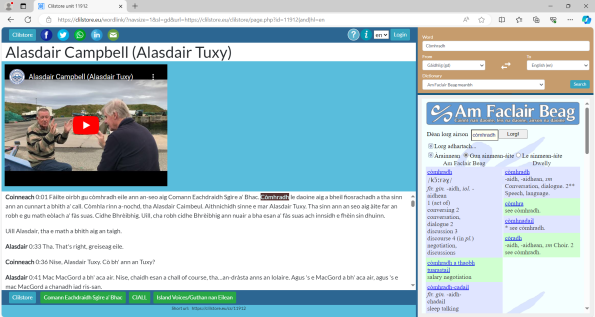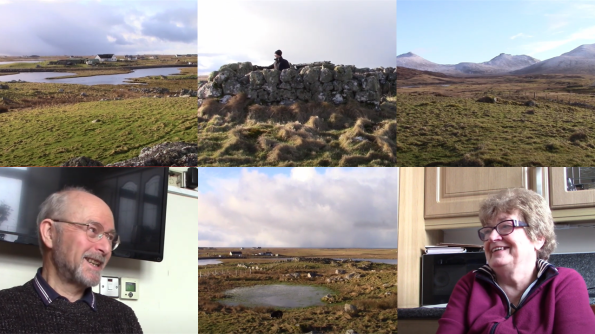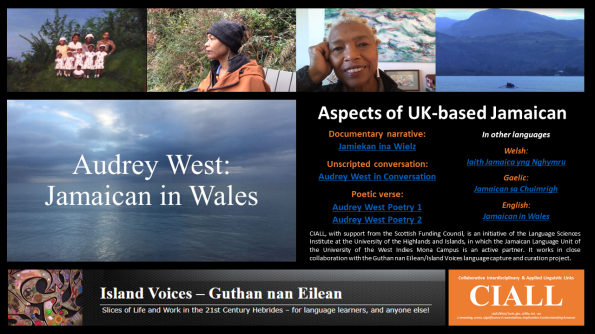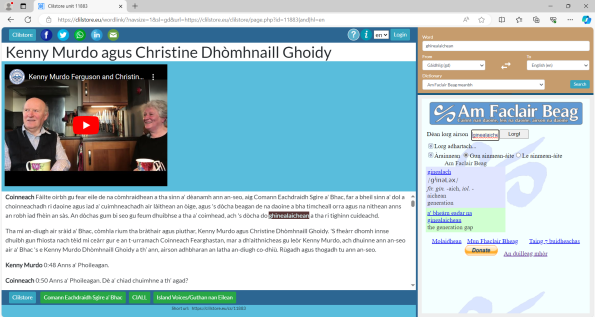Le Gordon Wells
Tommy Macdonald tells some of the history of Clann ‘ic Mhuirich (“Clan Currie”) from the ruin of the ancestral home in Stilligarry, South Uist, and recounts some tales from other nearby sites.
In Part 1, he relates where Clann ‘ic Mhuirich came from, and when, and how they came to settle in Uist eventually. Their hereditary bardic role spanned centuries of Scottish history, before petering out with the loss of patronage, of skills, and eventually of manuscripts.
In Part 2, Tommy explains how Stilligary came to be known as “Baile nam Bàrd”. He goes on to talk about changes of the Mac Mhuirich family name. The impressive size of the ruin and some archaeological finds point to their importance in the community, and the power the family could exercise through their poetic and scholarly skills. He finishes with a short recitation.
In Tobhta Fhearchair, Tommy goes on to tell some of the history of the Beatons from the ruin of Fearchar’s home on the boundary between Tobha Mòr and Dreumasdal. He explains that the Beatons were renowned as doctors, especially in the West of Scotland, with strong connections to Skye and Islay as well as Uist. He refers to the work of Alasdair Carmichael (Carmina Gadelica) to illustrate their knowledge of plants and their uses, while acknowledging that Fearchar himself may not have been as knowledgeable as his forebears. A finishing quote from Martin Martin underlines the family’s historical association with the medical profession.
At Dùn Raghnaill, built for Clanranald, Tommy relates the story of why it was built – to protect the clan chief Mac ‘ic Ailein from his own family – in a time of sometimes bloody sea-borne raids along the Minch. According to local history, it was later used to imprison a daring sea-faring Mac Mhuirich, whose hereditary bardic skills were such that the style of his composition from within the prison walls of the song “Mulaid Prìosanach ann an Dùn Raghnaill” was sufficient for him to be recognised and identified by his own estranged father.
All four films – with optional subtitling available for learners or non-speakers of Gaelic – have been added to the taighean-tughaidh playlist. This work is supported by CIALL.
Powered by WPeMatico
Tadhail air Island Voices – Guthan nan Eilean










